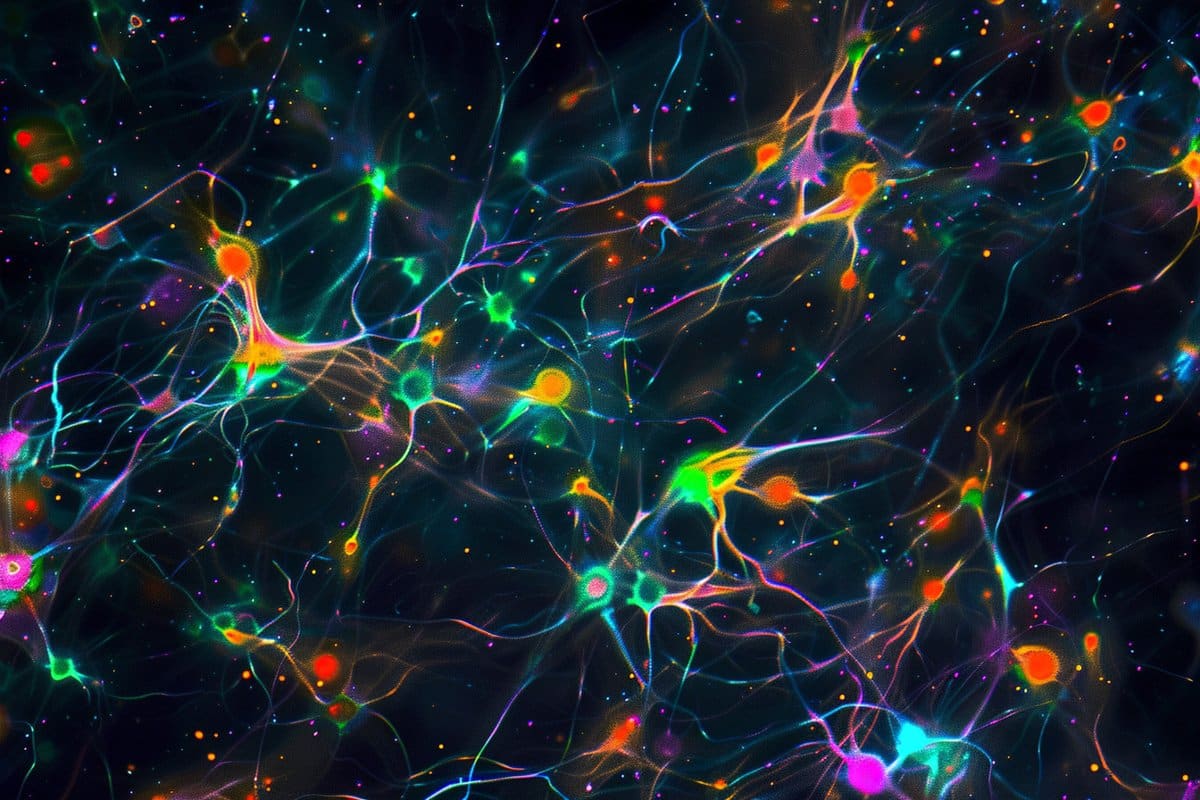Summary: Researchers identified a crucial role of specific interneurons in brain development. The research identified two types of interneurons, SST+ and PV+, which orchestrate the transition from synchronous to asynchronous neuronal activity during the early stages after birth.
This transition is vital for the brain’s ability to process sensory information efficiently. By understanding how these interneurons regulate brain maturation, the study sheds light on potential mechanisms underlying various neurodevelopmental disorders.
Key Facts:
- The study identifies SST+ interneurons as initiators of synchronous neural patterns and PV+ interneurons as facilitators of the transition to asynchronous activity in the developing brain.
- SST+ interneurons also influence the maturation of PV+ interneurons, highlighting a hierarchical interaction crucial for timely brain development.
- The findings have implications for understanding neurodevelopmental disorders linked to these interneurons, offering new avenues for research into their roles in conditions like autism and schizophrenia.
Source: King’s College London
Scientists at the Centre for Developmental Neurobiology and MRC Centre for Neurodevelopmental Disorders published a study in Neuron that identified two types of interneurons, the inhibitory neurons of the brain, as instructors of a key developmental process in the brain.
During early development after birth, brain networks are characterised by bursts of activity that synchronise a large number of neurons. As the brain matures, this activity pattern changes in rhythm, frequency, and amplitude to become asynchronous, where only a small population of neurons are simultaneously active.

These changes allow the brain to process and adapt to the vast information our senses receive.
Although this transition between patterns of neuronal activity is a crucial milestone in brain development, the cellular mechanisms behind this process remain poorly understood. In this study, the laboratory led by Oscar Marín sought to investigate the key players behind this transition.
The scientists observe that increased inhibitory signals cause this transition. While excitatory and inhibitory signals shape the early developing brain, the inhibitory signals appear later than the excitatory ones. The progressive maturation of interneurons, the cells that generate these inhibitory signals, dictates the development of brain function.
The cerebral cortex contains a large diversity of interneurons. In this study, they identified the specific interneurons responsible for the modulation of network activity in the mice’s first two weeks of postnatal development. SST+ interneurons generate synchronous patterns of neuronal activity, whereas PV+ interneurons are responsible for the transition to an asynchronous pattern of activity.
They also found that SST+ interneurons partly control the maturation of PV+ interneurons and thus instruct the timing of this transition. Additionally, preventing SST+ interneurons from carrying out their action leads to a delay in brain development. These results confirm SST+ interneurons’ role as critical regulators of neuronal dynamics in the developing brain.
“We have identified the subclasses of interneurons that integrate and regulate a key stage in brain development. These interneurons, SST+ and PV+ interneurons, have also been associated with several neurodevelopmental conditions.
“These findings indicate that we need to further look at these interneurons to better understand these conditions,” said Professor Oscar Marín FMedSci FRS, Professor of Neuroscience and the senior author of this study.
About this neurodevelopment and neuroscience research news
Author: Annora Thoeng
Source: King’s College London
Contact: Annora Thoeng – King’s College London
Image: The image is credited to Neuroscience News
Original Research: Open access.
“Somatostatin interneurons control the timing of developmental desynchronization in cortical networks” by Oscar Marín et al. Neuron
Abstract
Somatostatin interneurons control the timing of developmental desynchronization in cortical networks
Highlights
- Somatostatin interneurons regulate the developmental decorrelation of network dynamics
- Somatostatin interneurons critically link sensory inputs with local circuits
- Somatostatin interneurons modulate the maturation of parvalbumin interneurons
Summary
Synchronous neuronal activity is a hallmark of the developing brain. In the mouse cerebral cortex, activity decorrelates during the second week of postnatal development, progressively acquiring the characteristic sparse pattern underlying the integration of sensory information.
The maturation of inhibition seems critical for this process, but the interneurons involved in this crucial transition of network activity in the developing cortex remain unknown.
Using in vivo longitudinal two-photon calcium imaging during the period that precedes the change from highly synchronous to decorrelated activity, we identify somatostatin-expressing (SST+) interneurons as critical modulators of this switch in mice.
Modulation of the activity of SST+ cells accelerates or delays the decorrelation of cortical network activity, a process that involves regulating the maturation of parvalbumin-expressing (PV+) interneurons. SST+ cells critically link sensory inputs with local circuits, controlling the neural dynamics in the developing cortex while modulating the integration of other interneurons into nascent cortical circuits.






